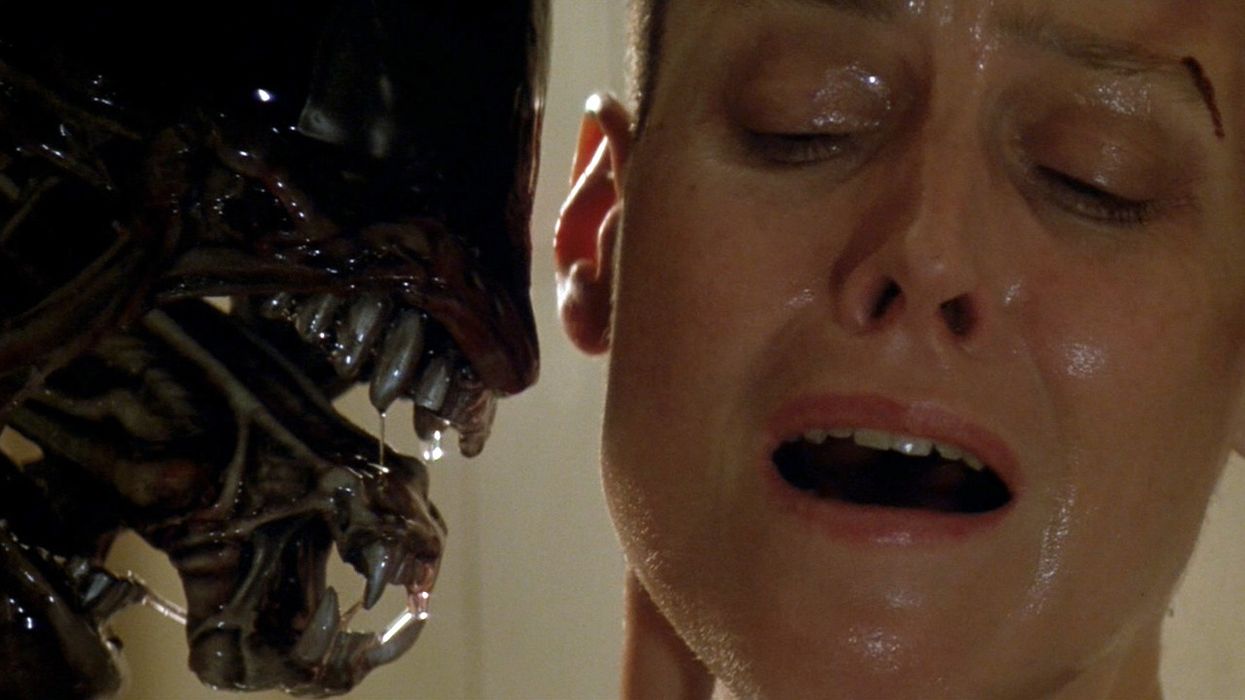SFX vs. VFX: Two Effects Artists Discuss the Differences Between Practical & CGI

Are you a little obsessed with practical effects? Well, I am. When I was a kid, I saw Jurassic Park when it came out in theaters, and I remember sitting up in the mezzanine -- wide-eyed and mouth agape -- staring at the ginormous T-Rex that I absolutely thought was real. Okay, not real real, but I just knew that it was present; it was something that shared the same space as the actors. It was made and controlled by human hands and I just thought that was amazing.
And then CGI came along. Essentially every creature, monster, mythical being in pre-Jurassic Park movies were done practically with models, puppets, animatronics, etc, but after Industrial Light and Magic's incredible innovations in CGI, which they first used in The Abyss, T2, and a few others, the world of special effects grew to make room for all of the creative beings and places artists would create: dinosaurs, aliens, new worlds, superheroes scaling buildings and swinging through New York City.
And this is how wars are started. Innovations. You've heard this argument before: "CGI is better." "No, you idiot. Practical effects are better." "Practical effects look fake as fudge, dude." "Are you kidding me!? You're going to tell me that the werewolf transformation in An American Werewolf in Paris looks more real than the one in An American Werewolf in London?" "Whatever, man." "Whatever, you. CGI is ruining the effects game." "If by ruining you mean bringing it to new heights then yeah, we're totally ruining the shit out of it!" "Go play on your computer, you nerd." "Yeah, go play with your dolls, dude."
Or how about the argument that CGI is putting practical effects out of business? Tom Woodruff Jr. and Alec Gillis Amalgamated Dynamics, a special effects company based near L.A., had a chat about this very topic in this new video from Cracked. In it, they talk about everything effects-related -- practical, CGI, comparing the two in terms of production, pros and cons, and why artists from each camp should stop bickering over which is better. Check it out below.
Essentially what Woodruff and Gillis are saying is that CGI isn't your enemy, Practical Effects, and vice versa. In fact, they make a perfect team. It's not a "them or us" kind of situation, just ask two of the greatest practical effects artists in the world, Rick Baker and Tom Savini, who are anything but anti-CGI. In this piece for Tested, Baker said:
CGI is an amazing tool, and it’s only as good as the artist behind it. I think if you have a very talented director and give him good tools to use, he’ll make a good movie. If you have a crappy director and give him good tools, he’ll still make a crappy movie.
Savini follows up with:
My feeling is CGI makes it better. It used to be a challenge to try and create what was in the script. Now anything you can imagine can be created on the screen. I love CGI when it’s done well, I love the stuff they did in The Mummy. They still use the make-up guys to design the creatures and that’s what they work from. I don’t think you’ll see make-up effects guys hanging out on corners with signs that say: WILL DO EFFECTS FOR FOOD.
As someone who fell in love with practical effects at a young age, who loved my animatronic buddies from Critters, Gremlins, and E.T., practical has its place, as does CGI. There's a place for a guy in an alien suit to chase people through an abandoned Moon base, and there's a place for a super slow motion shot of that alien flying through the air and exploding in an aesthetically pleasing splatter pattern. There's a perfect collaborative opportunity in every film.
Source: Cracked










![Ethos, Pathos, Logos: 20 Effective Ways to Advertise [Infographic]](https://nofilmschool.com/media-library/ethos-pathos-logos-20-effective-ways-to-advertise-infographic.jpg?id=34064614&width=600&height=600&quality=90&coordinates=560%2C0%2C0%2C0)

